Want a heads up when a new story drops? Subscribe here.
When millennials were growing up, the Internet was still in its infancy. In the 1960s, Generation X had just three TV channels to watch, and television was the main source of information and communications in American society.
Today, we can select from hundreds of TV channels and content formats. From movies, documentaries, and sitcoms to reality shows, cookery programs, and talk shows, there are more genres available than ever before.
But TV is just one distraction. We are now surfing the web, texting, chatting, Tweeting, and Facebooking. Given the sheer amount and easy access to information, opportunities, and products, we switch attention at a moment’s notice to what we find more valuable, fun, or interesting.
Gen X and Millennials, the generations that witnessed the onset and tremendous growth of the Internet, are now navigating a sea of data in a truly digital world. Millennials have also begun their takeover of the C-suite, a fortress that has long been dominated by Generation X.
They are also the folks that B2B marketers are targeting and the ones most affected by communication and information fatigue. Senior level managers are under pressure to be always available at the workplace. They are bombarded with emails, phone calls, and pitches all the time. Grabbing their attention to get to know you, let alone show interest in what you are selling is incredibly difficult.
Information explosion has made it more difficult to stand out from the crowd, and businesses have come to realize that they need to invest an extra effort in creativity.
To break through the vast amount of information available, they are experimenting with different marketing strategies and content that can increase engagement, build influence, and help gain credibility. Having a podcast is a powerful tool to achieve these goals and establish long-term relationships with valuable customers. Here are 7 powerful reasons why your B2B business needs its own podcast to help you make up your mind.
Table of Contents
1. Reach High-Value Customers
A significant share of the people who listen to podcasts are highly educated, employed full-time, and live in upper-income households. They are the type of people that are more likely to hold senior level positions which naturally makes them valuable customers.
Research also supports the assumption that podcast listeners earn more and are well educated on average. Polling 4,398 respondents, the Podcast Consumer 2019 shows that 44 percent of consumers are employed full-time compared to 7 percent temporarily unemployed and 12 percent part-time employed.
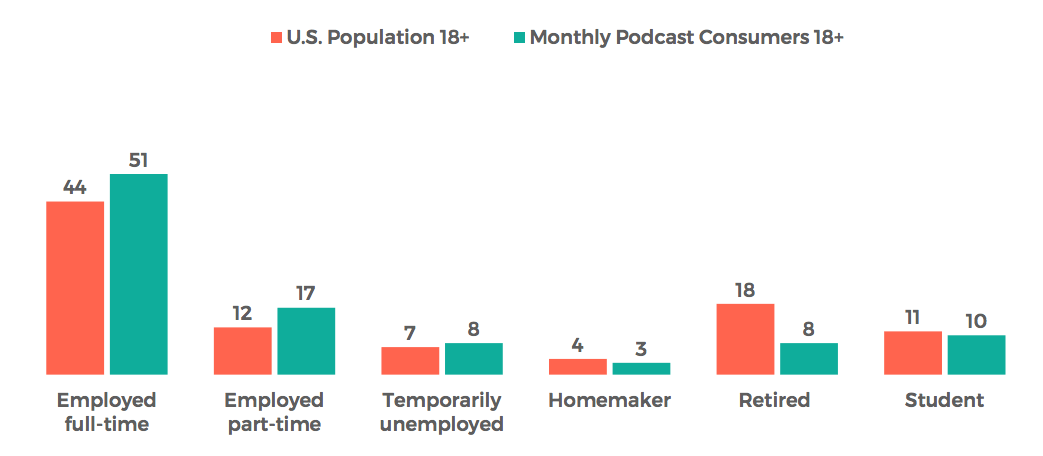
Credits: The Infinite Dial – EdisonResearch and Triton Digital, 2019
Only 32 percent have a high school diploma or less while 26 percent have some college education, 19 percent hold a college degree, and 20 percent hold an advanced or graduate degree.
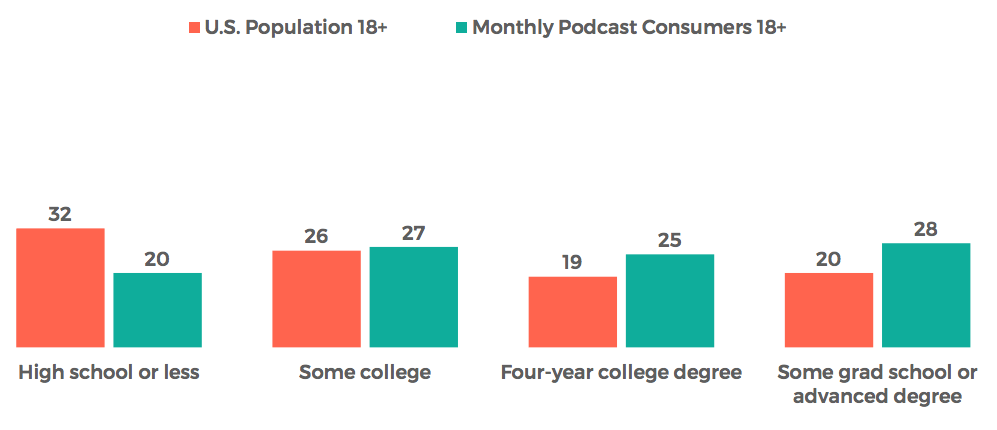
Credits: The Infinite Dial – EdisonResearch and Triton Digital, 2019
Nearly 1/3 of all podcast consumers have an annual household income above $75,000, 11 percent have income between $100,000 and $150,000, and 8 percent make $150,000 or more.
When asked how likely they are to consider a brand that is advertised, 37 percent answered that it is somewhat more likely and 17 percent said that it is much more likely. Only 4 percent of consumers answered that it is much less likely.
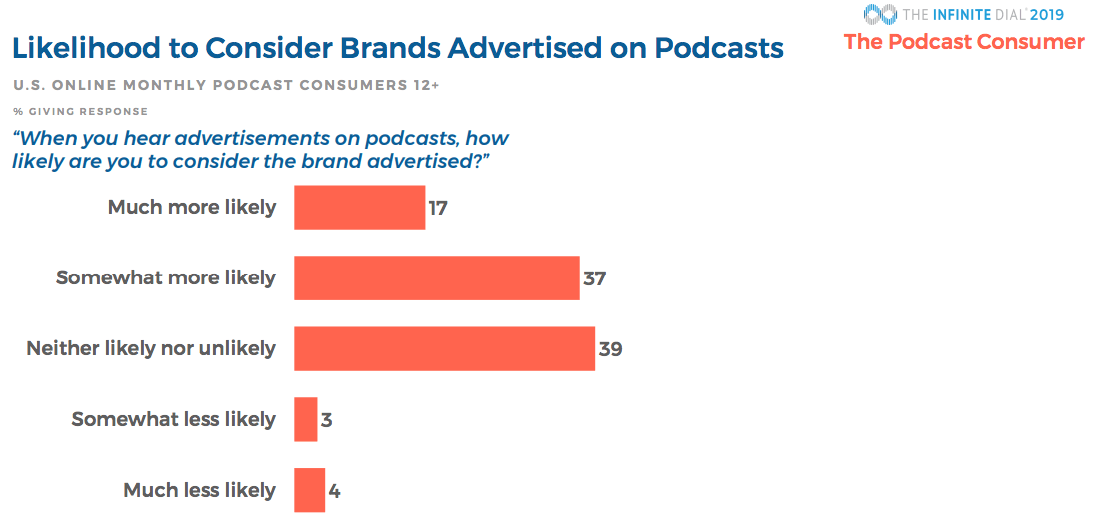
Credits: The Infinite Dial – EdisonResearch and Triton Digital, 2019
2. Break through the Marketing Noise
Podcasting allows brands to stand out in a saturated market. This is because it goes deeper into topics than other forms of content and is typically targeting a niche audience. Podcasts enable marketers to connect with engaged consumers who are actively seeking rich, specific, and informative content.
And while this medium is not entirely interactive like social networking sites, it nevertheless encourages a continuous dialogue with consumers. Interviewed brands can leave their contact information so that listeners engage with them, ask questions, and give feedback.
3. Beat Notification Fatigue
Senior level executives are bombarded with all sorts of messages through multiple channels. A survey by Flock and Compt probed into how managers feel about workplace communication and the ways in which they prefer to communicate. The survey results show that C-level leaders are the worst affected by communication overload because they are the ones to receive the most emails and messages.
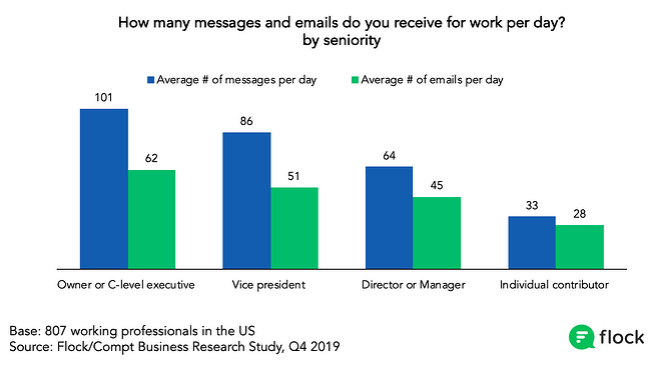
Credits: Flock/Compt Business Research Study, 2019
On average, C-level executives and owners get 101 messages a day, followed by vice presidents (86) and managers and directors (64).
Senior executives also report experiencing notification fatigue that can affect decision-making. Overall, 68 percent of C-level managers and 57 percent of vice presidents say they receive too many notifications.
More than half of the executives don’t respond to messages they receive on their phone or computer. 61 percent of senior managers and 54 percent of vice presidents do not respond to all the notifications they get. The main reason is that they are under pressure to be always available. The majority of C-level executives (83 percent) and vice presidents (84 percent) share that they have to be always available.
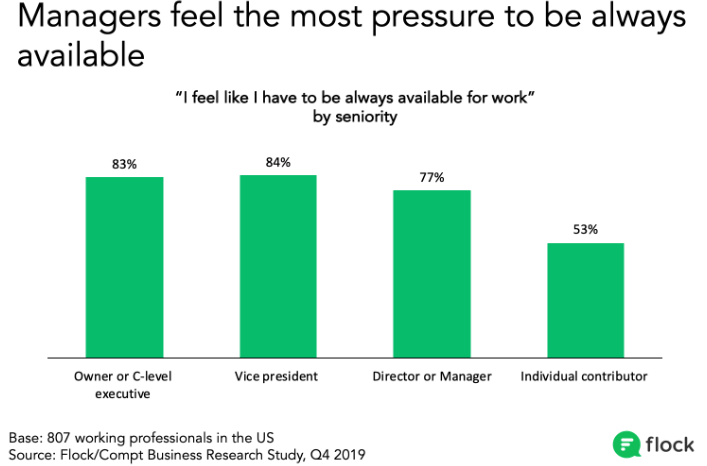
Credits: Flock/Compt Business Research Study, 2019
As senior managers are constantly bombarded with messaging and outreach by sales representatives, B2B marketers need to rethink their approach. Some things work, and some don’t. Trade show booths, webinars, and phone calls don’t work.
Executives rarely go to the booths, attend webinars, or answer their phone and even if they do, your pitch is likely to be ignored or rerouted. What works is videos, animated explainers, trusted network introductions, and podcasts, in particular, because they go further in depth. The main question is what topics to focus on to engage with the top brass, and here is how you can go about this.
4. Offer Macro Solutions
Discussing product features can help you reach an operations person. When you are marketing to the C-suite, you need to elevate your message and show how your product benefits their organization. The role of senior managers is to improve their company by maximizing performance, productivity, and efficiency. So you want to discuss strategic themes in their sector or address some of the challenges that a changing business landscape poses. This will make C-level managers more accessible and open to discussion.
Senior managers take a macro approach and need macro solutions. This is because their performance is tied to improving the bottom line, increasing profit margins, and driving new revenue opportunities. The main focus is on high-level concerns such as technology investment, sales productivity, talent retention, and growth.
C-level executives spend most of their time fine tuning their company’s strategy to achieve these objectives. Implementing new technologies and solutions can help businesses meet their objectives but product features are the last thing C-level executives are interested in. What they want to know is:
-
- How simple is the solution that you offer? This boils down to how long it will take to implement it before operations resume as usual. Whether staff will need extensive training is also factored in.
- How long will it take to see positive results?
- What ROI to expect? ROI is an important metric that senior level managers want to see. When considering a product, the main focus is on cost vs. gain.
- How will your product help improve the customer experience?
- What are the risks? The types of business risks that companies face while implementing new solutions are:
- Financial – if a problem occurs at some point, when and how it will be resolved;
- Reputational – whether implementing a new product will improve efficiency and increase customer following.
To stand out, you need to concentrate on pain points and goals and how a proposed solution helps achieve macro objectives.
In addition to making it easier for senior level managers to see the big picture, it is important to approach them as an equal. Most people like to engage with others they perceive as having similar experiences, challenges, goals, and characteristics. So instead of focusing on closing a deal as many sales reps do, you should position yourself as a partner, advisor, or guide.
5. Use Podcasting for Networking
Many businesses bring guests from their suppliers and customers. Mutual entanglements create value for all parties involved and are ideal for networking. What you can do is invite partners or prospects to discuss various topics and engage in a long-form, meaningful dialogue with them.
Most podcasting sessions clock in between 20 and 30 minutes. In today’s digital age and with so many distractions competing for our attention, you rarely have the chance to spend this amount of time with a single person.
What is more important, during a podcasting production session is that guests are fully engaged in the conversation. Competing for their time at a conference or trade show can be tough while here you can bring two or more guests and enjoy their undivided attention.
If you want to try a panel approach, you can invite 3 – 4 speakers who are experts in their field. Having more than 4 guests may result in a loss of focus and a disconnected conversation.
When bringing guests for your podcasting recording session, consider the value for speakers, consumers, and your business. For one, this is a unique opportunity to engage with high-value clients and develop a more meaningful and lasting connection with them.
6. Offer Convenience
A major benefit that separates podcasting from other marketing strategies is convenience and ease of consumption. C-suite executives are incredibly busy. Gaining access to high-value buyers is anything but easy because they are approached by sales people like you all the time. This is why they would rather receive information when they need it, and they usually do it through digital outlets like mobile web pages and the search engines.
Podcasts also allow busy professionals to do other things while listening. The Podcast Consumer 19 shows that this is the main reason why listeners find podcasts enjoyable. The majority of people (87 percent) say they can do other things while 78 percent enjoy audio content because they can listen wherever they are. The main activities done while listening are housework, driving, relaxing, cooking, walking outside, riding public transportation, and exercising or running.
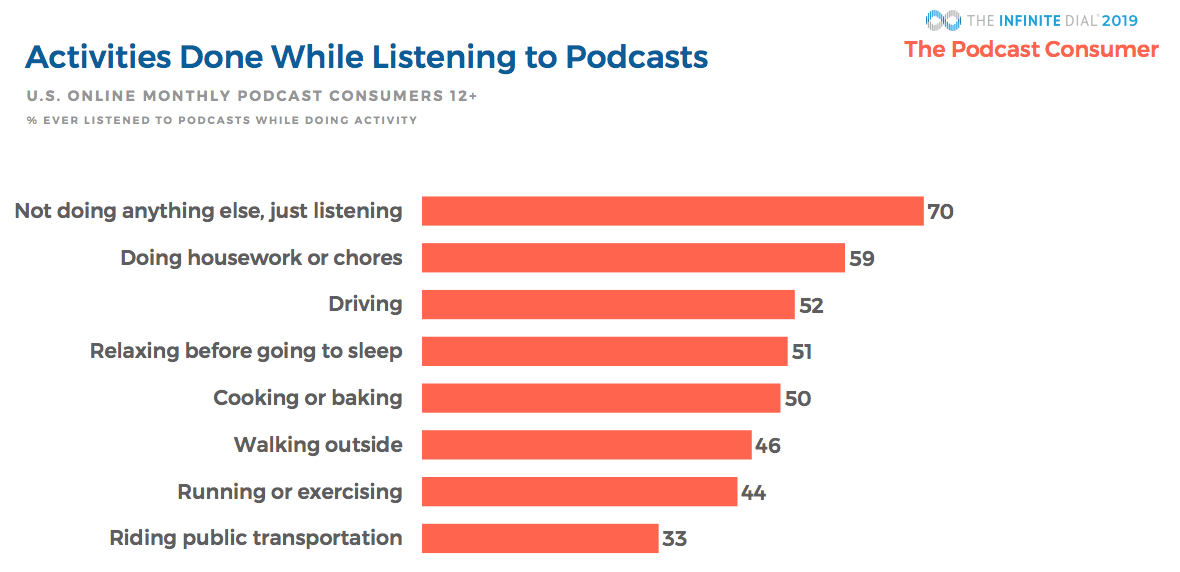
Credits: The Infinite Dial – EdisonResearch and Triton Digital, 2019
While consumers are more interested in topics like music (39 percent), news/information (36 percent), and entertainment (32 percent), 18 percent of listeners prefer business-related content.
7. Create Other Forms of Content
You can use a single episode to create different types of content and save a lot of time. For example, you can publish the transcription as a long-form article or share parts of it as social media posts. Another idea is to turn the podcast into a YouTube or Facebook video. You can even post single sentences or paragraphs on Twitter or Instagram by turning them into quotes. Featuring downloadable lead magnets is yet another idea. Repurposing also allows you to use your podcast to:
- Create an infographic
- Build memes
- Create mashups and clips
- Send an email series
- Offer episode summaries
- Feature a “what do you think” round to start a discussion and engage with your audience
There are plenty of ways to repurpose content and deploy it on social media, your website, and elsewhere to increase visibility. And as for consumers who already listened to your podcast – people love familiarity.
Using multiple channels to share your marketing podcast and repurposed content is one way to increase your reach and sales potential. But whatever your marketing strategy is, keep in mind that trust is the main indicator of sales success.
According to the State of Sales E-Book, 99 percent of sales representatives believe that trust is important or very important to winning new customers. For 44 percent of respondents trust is the most important factor for closing a deal, followed by price (18 percent) and ROI (28 percent).
What is more important, 51 percent of decision-makers say trust is the main factor that influences deals. The majority of executives also choose to do business with sales representatives who are consultative (91 percent), well informed about their company (90 percent), focused on relationship building (87 percent), professional (93 percent), and trusted advisors (88 percent).
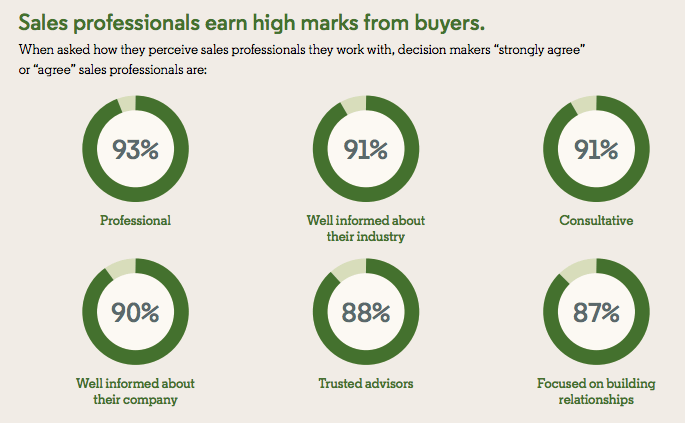
Credits: State of Sales 2018 by LinkedIn
Takeaways
There are plenty of good reasons why your B2B business needs a podcast, from reaching high value customers and beating notification fatigue to networking and building lasting relationships. Using a podcast is a great way to stand out in a sea of sameness and differentiate your organization. As you are trying to access the busiest buyers on Earth, it is crucial to address the issues that C-level executives are facing. You may want to approach this from an industry perspective and consider topics such as successful business models, competitive dynamics, or new regulations. When booking speakers for your next podcasting session, think of the types of questions that will help you to relate on a more personal level. Avoid gossipy comments and questions such as “What made you leave your former company? Is it that you felt undervalued or you were forced out?” Instead, ask your guests about the goals they have for their company, what are the biggest challenges they’ve overcome, what are the biggest strengths of their company, and what their outside interests are. Senior managers are people too. In fact, executives devote a lot of time to their hobbies because leisure provides much needed detachment and break from their busy schedules. Other questions to ask are, for example: “What is most important to your company – values, mission, or vision?”, “How do you measure success?”, and “What are the main challenges that companies face as the industry landscape changes?”
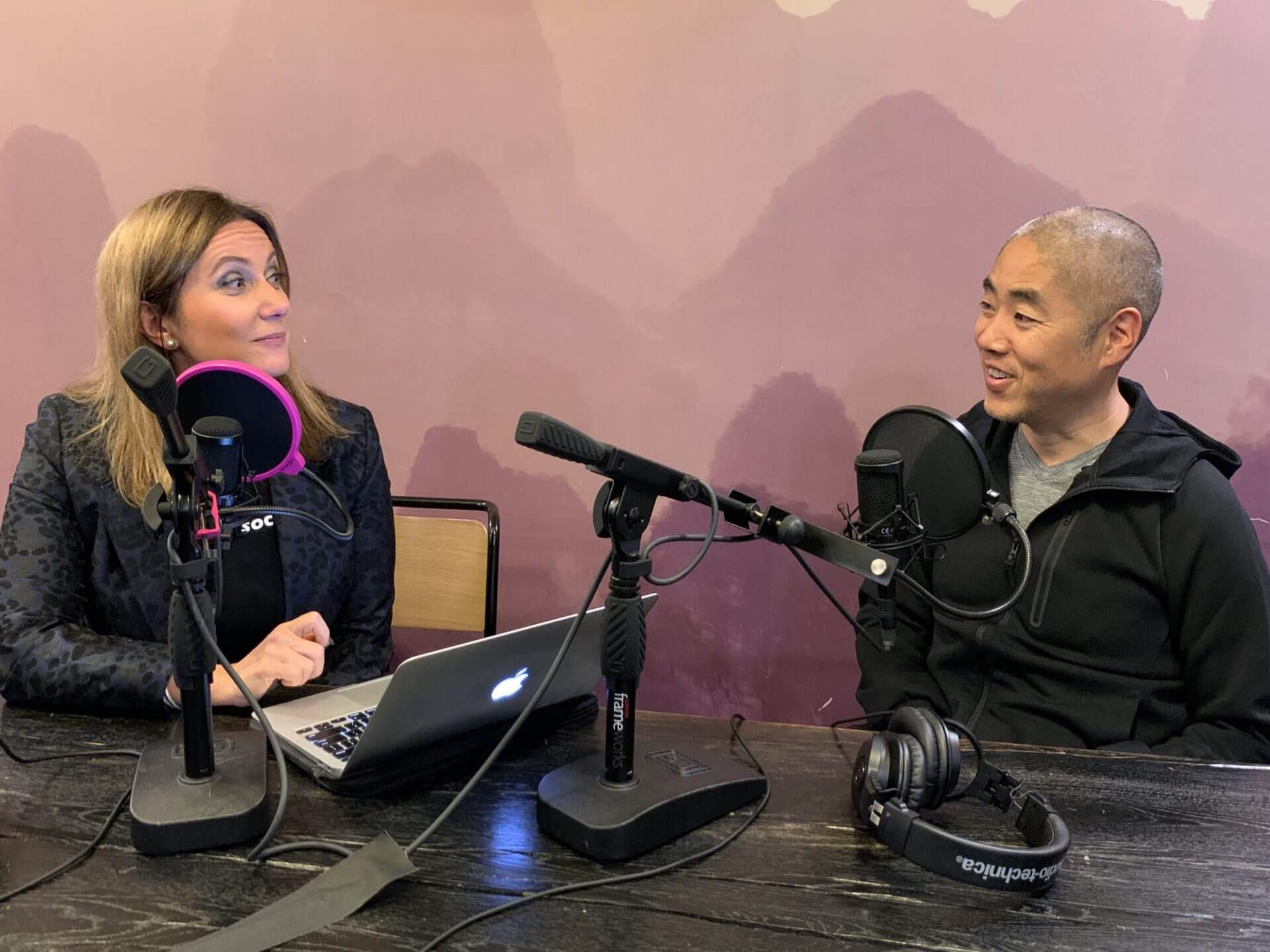
Asking the right questions is a great way to unlock value and influence the outcome of conversations. Insightful questions help guide the conversation and create context for guests to bring different perspectives. They may see things differently based on what they consider important and what is familiar to them. The human perceptual set involves values, beliefs, attitudes, and worldviews that are shaped by different cultures, experiences, and backgrounds. Bringing guests with different experiences and perspectives allows you to relate to a wider audience and enables listeners to share these experiences and develop and enrich their own worldviews.
Engaging in a meaningful conversation goes beyond conducting interrogation and brings a deeper level of understanding. Inquiry and exchange of ideas have the power to cause a mental shift and help us see things from a different angle of view. They can help redefine meaning and purpose in a positive way to be one of continuous improvement and growth.
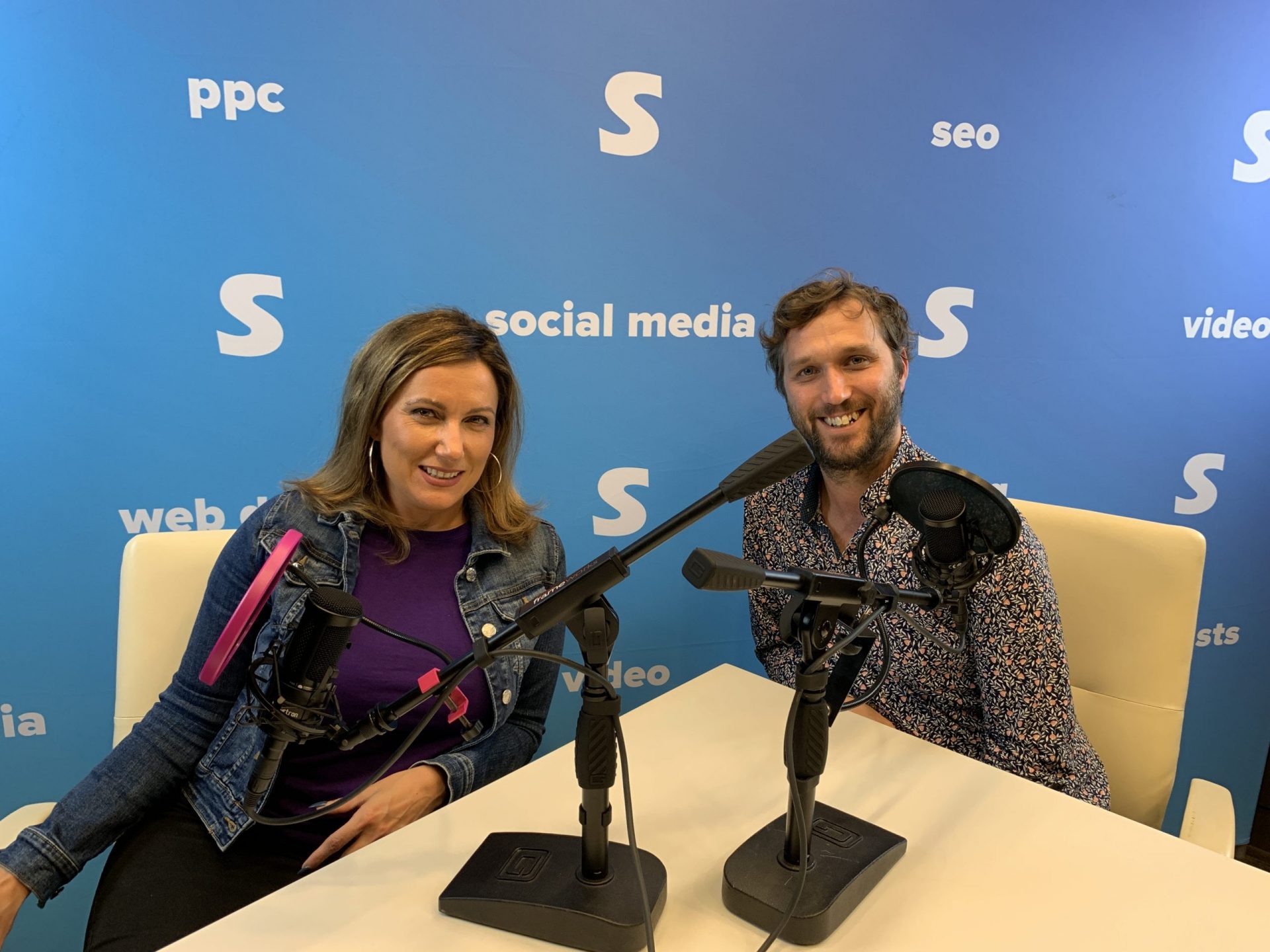
Constructive dialogue, as the main mechanism of engagement, is crucial to making that same engagement authentic, meaningful, and inclusive. It is the key to building trust and relationships when communication is genuine. And it is precisely meaningful conversations that podcast listeners are drawn to as guests are given dialogic opportunities to make their voices heard in genuine, non-judgmental, and inclusive ways.
Sources:
http://www.edisonresearch.com/wp-content/uploads/2019/04/Edison-Research-Podcast-Consumer-2019.pdf
https://blog.flock.com/communication-overload-hits-executives-hardest
https://business.linkedin.com/content/dam/me/business/en-us/sales-solutions/cx/2018/images/pdfs/state-of-sales-ebook.pdf
https://www.forbes.com/sites/jeffboss/2016/08/03/the-power-of-questions/?sh=2d39a99a62a5
https://www.tribetactics.com/blog/how-to-repurpose-podcast-content




